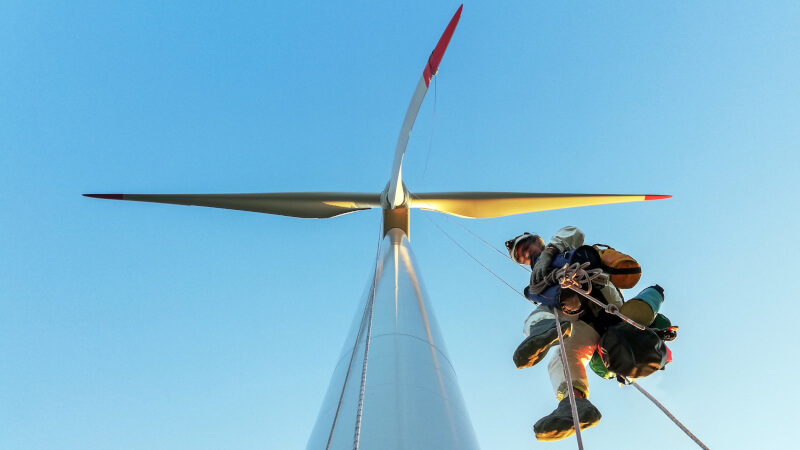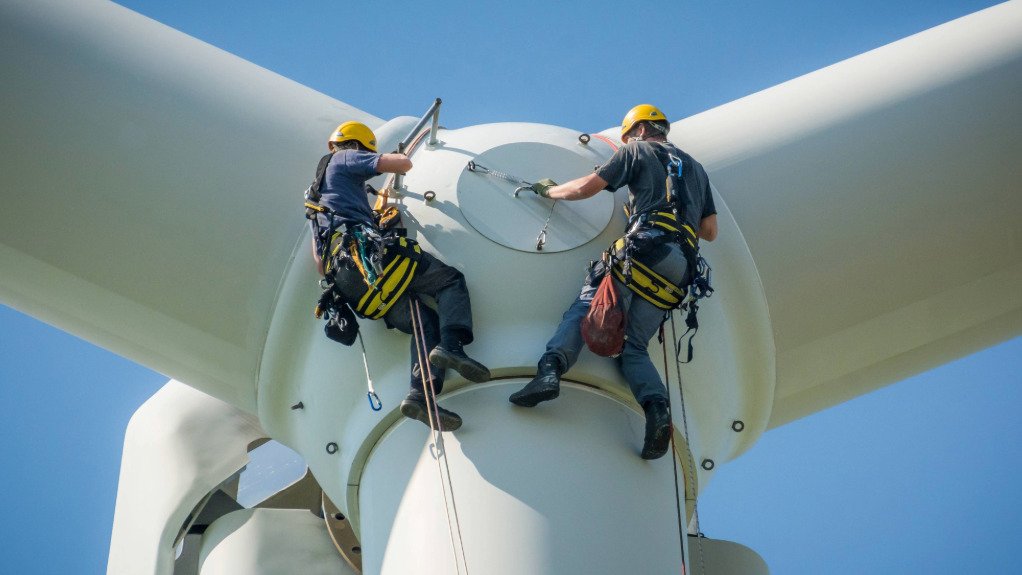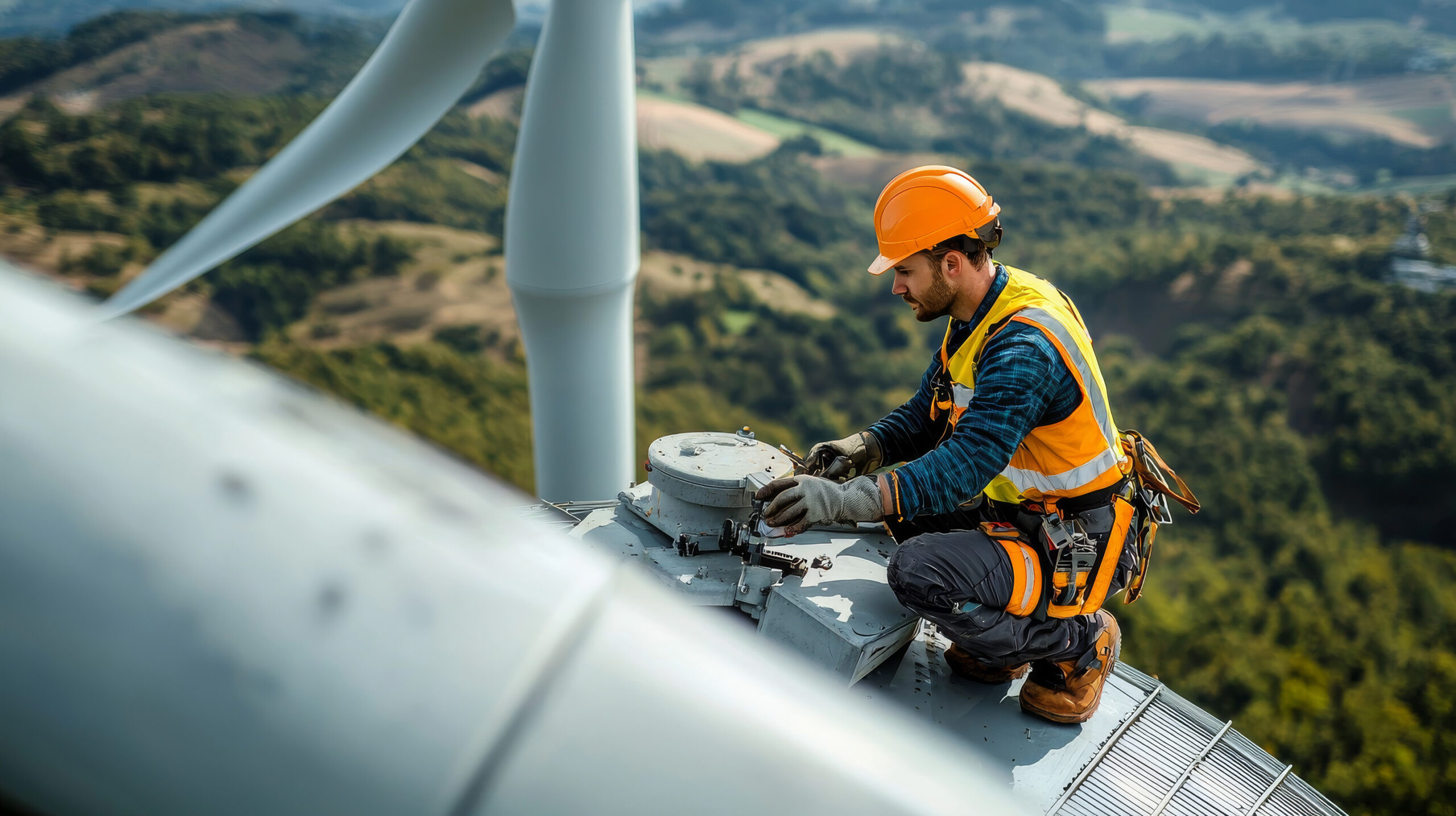
Every day, technicians climb towers over 100 metres high to inspect, repair, or maintain wind turbines. And while fall protection gets the spotlight, dropped object prevention is just as critical in the wind industry.
Dropped objects are a leading cause of serious injuries and fatalities in workplaces where tools and equipment are handled at height. Whether it’s a loose wrench, a portable radio, or an unsecured part, even small items can become deadly hazards when dropped from a height.
Understanding the causes of dropped objects, how to prevent them, and the importance of dropped object prevention training is critical to creating safer work environments in the wind industry and all industries where working at height is involved.
What are Dropped Objects?
A dropped object refers to any item that falls from its original location and has the potential to cause injury, damage, or death. These objects may fall under their own weight or be dislodged by wind, vibrations, or incidental contact.
There are two main types:
- Static Dropped Objects: These fall due to poor installation, wear and tear, or failure of fixtures (e.g., signage, lighting, tools resting on ledges).
- Dynamic Dropped Objects: These fall due to movement or interaction, like when tools slip from a worker’s hands or from improperly secured equipment during lifting operations.
Common Causes of Dropped Objects
Dropped objects are rarely random; they are the result of identifiable and preventable factors:
- Improper tethering of tools or equipment
- Lack of storage solutions or secure holding areas
- Wind and environmental pressure, particularly at height
- Tool slippage due to oily or wet surfaces
- Overhead clutter or unsecured materials
- Inadequate risk assessments before working at height
Why Dropped Object Prevention is Critical
The consequences of a falling object can be catastrophic. According to industry data, tools dropped from as little as 5 metres can cause fatal injuries. Even a small bolt or screwdriver becomes a lethal projectile when falling from significant height.
Beyond personal injury or loss of life, dropped objects can:
- Damage critical infrastructure and machinery
- Halt operations and cause costly delays
- Result in legal liabilities and insurance claims
Investing in dropped object prevention not only protects your workforce, it safeguards your reputation and bottom line.
Tool Tethering: Your First Line of Defence

One of the most effective ways to prevent falling tools is to tether tools for working at height. Tool tethers act as a secondary attachment, keeping your equipment connected to a fixed point, your harness, belt, or tool bag, even if accidentally dropped.
Best Practices for Tethering at Height
- Use tool lanyards designed for specific weight ratings
- Always attach lanyards to a secure harness point or anchor
- Use retractable tethers for tools that require regular movement
- Store smaller items in sealed tool pouches with secure closures
- Avoid DIY tethering solutions — use certified equipment
- Conduct daily inspections of all tethering equipment for wear or damage
REMEMBER: Tethering a 2 kg spanner to a 10 kg-rated lanyard will not help if the lanyard is clipped to a belt loop instead of a Dring harness point.
Training and Awareness Save Lives
At Skylar Education, dropped object prevention is embedded throughout our training programs — not treated as an afterthought.
We teach participants to:
- Identify high-risk situations and zones
- Conduct pre-job dropped object risk assessments
- Perform proper buddy checks before ascent
- Apply load-rated tethering systems correctly
- Maintain clean, organised work areas at height
- Respond to dropped object incidents as part of emergency procedures
These practices are integrated into GWO Working at Heights and Advanced Rescue Training (ART) sessions — because we know that good habits on the ground do not always translate to good habits 100 metres up.
Hierarchy of Dropped Object Controls
| Control Level | Example |
| Elimination | Pre-assemble components before ascent |
| Substitution | Use lighter or non-metal tools where safe and appropriate |
| Engineering Controls | Use netting, barricades, and dropped object zones |
| Administrative | Job planning, tool checklists, exclusion zones, supervision |
| PPE | Hard hats, face shields, safety boots (final line of defence) |
The Hidden Cost of a “Small Mistake”
Even if no one is hurt, dropped objects cause:
- Project delays
- Equipment damage
- Increased downtime
- Higher insurance premiums
- Reputational risk
- Regulatory investigations and penalties
In high-risk industries, incidents often come down to “just one moment” — a tool not checked, a pouch not zipped, a habit not reinforced. And while a tool may fall in a second, the consequences can last for months, or a lifetime.
Conclusion: Safety is in Your Hands
Dropped objects are preventable, but prevention depends on having the right systems, tools, and habits in place. By focusing on proven solutions like tethering tools and prioritising consistent, hands-on training, businesses can reduce incidents, protect their teams, and build safer, more compliant worksites. It is also about leadership, professionalism, and personal accountability. From ground level to the highest platform, safety is a shared responsibility.
At Skylar Education, we deliver industry-aligned safety training that builds real-world competence — from tool tethering to full emergency response.
Protecting your crew and reducing site risks starts with the right training. Explore our next GWO Working at Heights course and give your team the practical, safety-focused skills they need to work safely and confidently at height.





